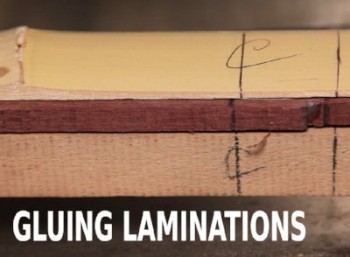The English Longbow has two main types of construction as far as types of material go, you either make a Self bow, a bow made from one piece of wood or a Laminated bow, one made of many pieces of wood glued together. The video below shows the basics of gluing laminations together and putting the stave to cure on a `former`. The former allows us to achieve a permanent shape in the stave, in this instance we make the stave bend the opposite way to that of which it will bend when the bow is used. By putting some `set back` (gluing the bow into position opposite to that of the way it will bend when being used) into the stave we can increase its power, mainly in the area of what we call `cast`, this is essentially the speed of the bow. As a bow ages it can develop `string follow`, this is where the bow eventually takes a `set`, the limbs start to remain partially in the braced position i.e. the limbs of the bow loose the ability to return to the straight position they were in when the bow was made, using the former and putting in some set back we can help eliminate this occurring.
Once you have glued up your laminations you will need to cut the materials in a `stave` ready for roughing out, but what is a stave? We generally use the term `stave` to refer to a piece of wood, either laminated as above or one piece (self), that has been cut to size and measured out ready for the next stage of building, have a look at the following video to get a good idea of what a stave actually is.

